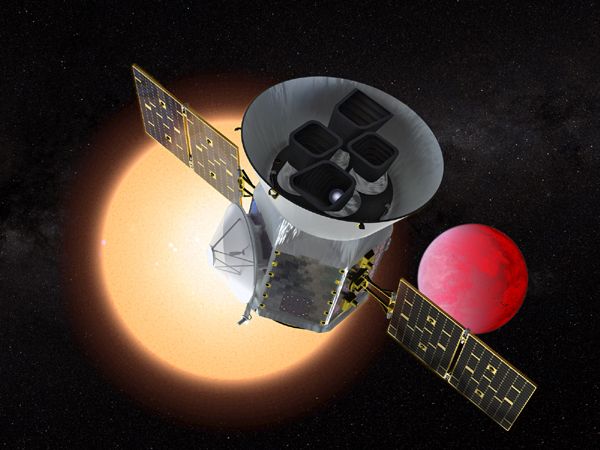
NASA GSFC
NASA’s TESS Spacecraft Starts Science Operations (News Release)
NASA’s Transiting Exoplanet Survey Satellite has started its search for planets around nearby stars, officially beginning science operations on July 25, 2018. TESS is expected to transmit its first series of science data back to Earth in August, and thereafter periodically every 13.5 days, once per orbit, as the spacecraft makes it closest approach to Earth. The TESS Science Team will begin searching the data for new planets immediately after the first series arrives.
“I’m thrilled that our new planet hunter mission is ready to start scouring our solar system’s neighborhood for new worlds,” said Paul Hertz, NASA Astrophysics division director at Headquarters, Washington. “Now that we know there are more planets than stars in our universe, I look forward to the strange, fantastic worlds we’re bound to discover.”
TESS is NASA’s latest satellite to search for planets outside our solar system, known as exoplanets. The mission will spend the next two years monitoring the nearest and brightest stars for periodic dips in their light. These events, called transits, suggest that a planet may be passing in front of its star. TESS is expected to find thousands of planets using this method, some of which could potentially support life.
TESS is a NASA Astrophysics Explorer mission led and operated by MIT in Cambridge, Massachusetts, and managed by NASA’s Goddard Space Flight Center in Greenbelt, Maryland. Dr. George Ricker of MIT’s Kavli Institute for Astrophysics and Space Research serves as principal investigator for the mission. Additional partners include Northrop Grumman, based in Falls Church, Virginia; NASA’s Ames Research Center in California’s Silicon Valley; the Harvard-Smithsonian Center for Astrophysics in Cambridge, Massachusetts; MIT’s Lincoln Laboratory in Lexington, Massachusetts; and the Space Telescope Science Institute in Baltimore. More than a dozen universities, research institutes and observatories worldwide are participants in the mission.
Source: NASA.Gov
****

No comments:
Post a Comment